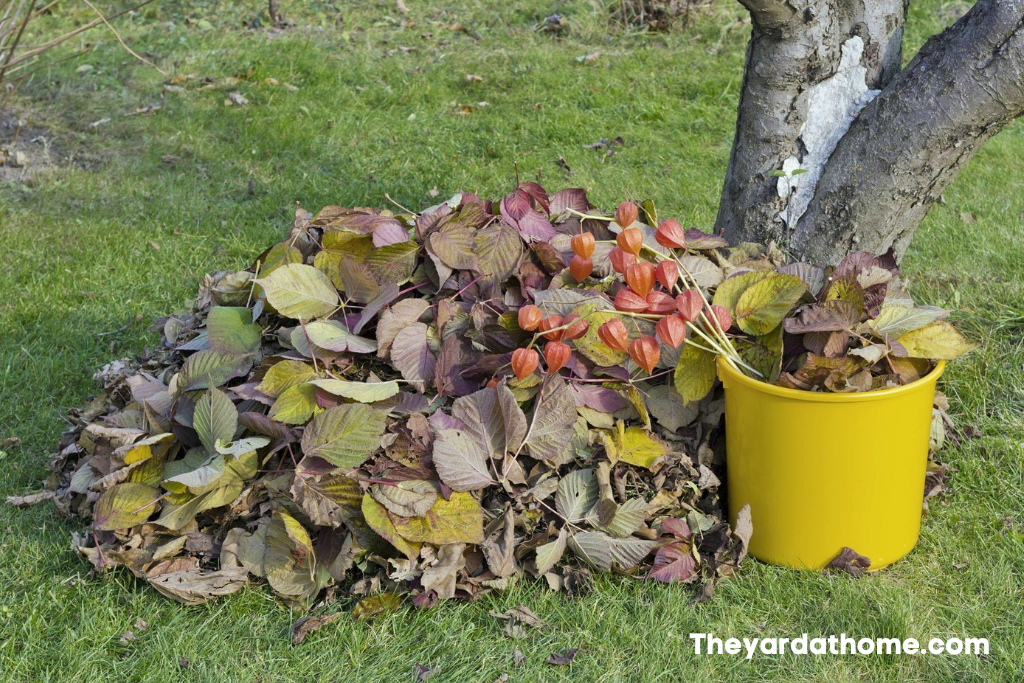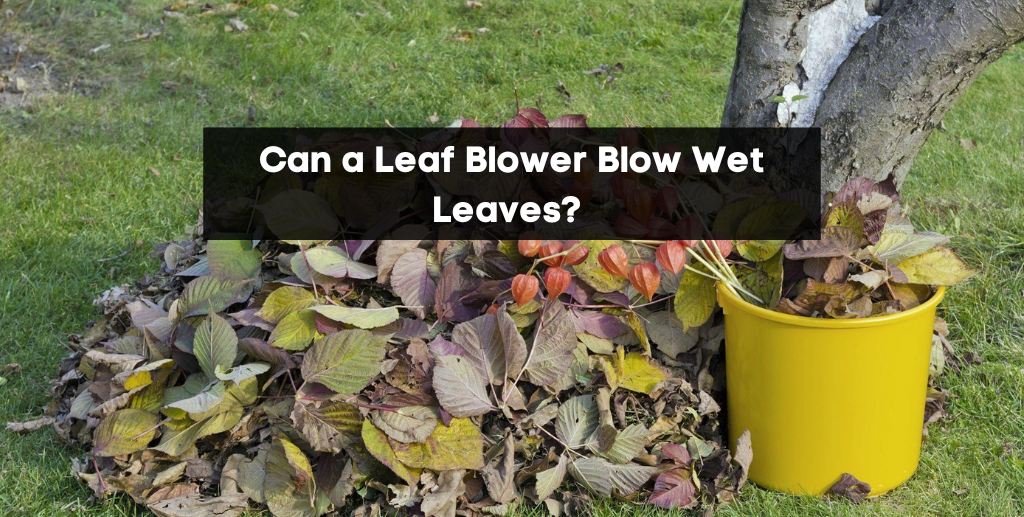Are you tired of struggling to clear your sidewalk of wet leaves with your small leaf blower? Let me tell you something, not all leaf blowers are created equal.
Some have the power to tackle even the wettest of leaves, while others can barely move a dry leaf. But don’t worry, I’ve done the research, and I’m here to spill the tea on which leaf blowers have what it takes to blow away those stubborn wet leaves.
Can a leaf blower blow wet leaves?
Yes, a leaf blower can blow wet leaves, but the effectiveness of the leaf blower will depend on the power of the leaf blower and the wetness of the leaves.
Gas-powered leaf blowers are generally more powerful and efficient for handling wet leaves than electric or battery-powered models.
However, extraordinarily wet and matted leaves may be difficult to move, and it’s important to note that using a leaf blower in wet conditions is not recommended as leaf blowers are not designed to be used in the rain, and even gas-powered blowers may develop rust if used in wet conditions. Therefore, waiting until the leaves are slightly dry is advisable before starting the work.
Factors to consider when using a leaf blower for wet leaves
When using a leaf blower for wet leaves, several factors can be considered to achieve the most effective results.
- Firstly, it’s essential to consider the power of the leaf blower. Gas-powered leaf blowers are generally more powerful and efficient for handling wet leaves than electric or battery-powered models. A powerful CFM and MPH are required to blow wet leaves effectively.
- Secondly, the wetness of the leaves should be taken into account. Extremely wet and matted leaves may be difficult to move, and more effort may be required to clear them.
- Thirdly, the technique used is also essential to consider when using a leaf blower for wet leaves. Directing a small jet of air to the pile of wet leaves is recommended so that it can be lifted off the ground and collected quickly. You may also need to pick up larger clumps of leaves and move them yourself.
Lastly, it is essential to note that using a leaf blower in wet conditions is not recommended as leaf blowers are not designed to be used in the rain, and even gas-powered blowers may develop rust if used in wet conditions. Therefore, waiting until the leaves are slightly dry is advisable before starting the work.
By taking these factors into account, you can ensure that your leaf blower is being used as effectively as possible for wet leaves.
Techniques for effectively removing wet leaves with a leaf blower
Removing wet leaves with a leaf blower can be a challenge, but with the proper techniques, it is possible to clear wet leaves from your yard effectively. Here are some methods to consider:
Jet of air technique:
Directing a small jet of air to the pile of wet leaves is a technique that can be used to remove wet leaves effectively. By aiming the leaf blower at the base of the pile of leaves, you can lift them off the ground and collect them more easily.
Scraping technique:
If some leaves are not moving well, it may be necessary to use the blower end to scrape the leaves loose. Once unstuck, they should comply with the jet of air technique.
Pick and move technique:
For larger clumps of wet leaves, it may be necessary to pick them up manually and move them to a more manageable location before using the leaf blower.
Power setting:
It’s essential to use the correct power setting on your leaf blower, as using a lower power setting may not be able to move wet leaves effectively.
Maneuvering:
Wet leaves may require basic maneuvering to move quickly and effectively, such as blowing leaves in a circular pattern to create a vortex that picks the leaves up.

Method: Removing Wet Leaves from Your Yard
Removing wet leaves from your yard can be tedious, but keeping your lawn healthy and neat is essential. Wet leaves can smother the grass and lead to mold and mildew growth.
- One way to remove wet leaves is by using a leaf rake. A leaf rake has wide tines designed to gather and collect leaves quickly. Rake the leaves into a pile and then use a tarp or lawn bag to collect and dispose of the leaves.
- Another method is to use a leaf blower. A leaf blower can quickly and efficiently clear leaves from your yard. However, it is essential to use a leaf blower designed explicitly for wet leaves, as regular leaf blowers can struggle with the added weight of the water.
- You can also use a lawn mower to mulch the leaves into small pieces. This is an excellent option if you have a large yard with many leaves. The mulched leaves can then be left on the lawn as a natural fertilizer.
Finally, if you have a lot of trees in your yard, consider installing gutter guards to prevent leaves from clogging your gutters. This can save you time and effort in the long run.
Video Guide on Removing Wet Leaves from Your Yard
Benefits of using a leaf blower for snow removal
Leaf blowers are not just useful for clearing leaves in the fall; they can also be a valuable tool for removing snow in the winter. Here are some benefits of using a leaf blower for snow removal:
- Speed: A leaf blower can quickly clear large areas of snow, making it a faster option for snow removal than shoveling.
- Efficiency: A leaf blower can blast away snow from tight spaces and hard-to-reach areas that a shovel might not be able to reach.
- Convenience: A leaf blower can quickly clear snow from sidewalks, driveways, and decks without bending over and lifting heavy snow.
- Minimize Physical Effort: using a leaf blower to clear snow can be less physically demanding than shoveling, and it can also be a good option for people with physical limitations.
- Versatility: Leaf blowers come in different sizes and models, making them suitable for various types of snow removal tasks, whether a small patio or a large driveway.
- Less Mess: A leaf blower can move snow without creating a big pile of snow, preventing the mess that shoveling can create.
- Cost-effective: a leaf blower is a relatively inexpensive option for snow removal.
- Environmentally friendly: Electric leaf blowers are an environmentally friendly option for snow removal as they don’t emit pollutants or greenhouse gases.
Top Some Things to Keep in Mind
5 Things to Keep in Mind When Using a Leaf Blower on Wet Leaves:
- Wait for dry weather before using the leaf blower
- Use a gas-powered leaf blower for more power
- Be mindful of the wetness of the leaves
- Use the right technique for blowing wet leaves
- Clean and dry off the leaf blower after use to avoid rust or other damages
Remove Wet Leaves from Your Yard with Backpack Blower
Frequently Asked Questions (FAQ)
Q: Can a leaf blower blow wet leaves?
A: Yes, a leaf blower can blow wet leaves, but the effectiveness will depend on the power of the leaf blower and the wetness of the leaves. Gas-powered leaf blowers are generally more powerful and efficient for handling wet leaves than electric or battery-powered models.
Q: What kind of leaf blower is best for wet leaves?
A: Gas-powered leaf blowers are generally more powerful and efficient for handling wet leaves than electric or battery-powered models. A powerful CFM and MPH are required to blow wet leaves effectively.
Q: Is it safe to use a leaf blower on wet leaves?
A: Using a leaf blower on wet leaves is not recommended as leaf blowers are not designed to be used in the rain, and even gas-powered blowers may develop rust if used in wet conditions. Before starting the work, it is essential to wait until the leaves are slightly dry.
Q: What technique is best for blowing wet leaves?
A: Directing a small jet of air to the pile of wet leaves is a technique that can effectively remove wet leaves. By aiming the leaf blower at the base of the pile of leaves, you can lift them off the ground and collect them more easily.
Q: Can I use a leaf blower for snow removal?
A: Leaf blowers can be helpful for clearing small areas of light or fluffy snow, but they’re not designed for deep or wet snow. It’s essential to read the manufacturer’s instructions and safety guidelines before using a leaf blower for snow removal and to consider the power and weather conditions.
Q: Is it necessary to clean and dry off the leaf blower after use?
A: Yes, it is essential to clean and dry off the leaf blower after use, mainly if it’s been used in wet conditions, to avoid rust or other damages.
Last Word
In conclusion, a leaf blower can blow wet leaves, but it is not the most efficient method and can cause damage to the machine. It is recommended to wait for the leaves to dry before using a leaf blower to clear them. Additionally, using a rake or broom to collect wet leaves may be more effective.

